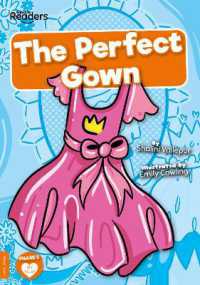Full Description
This volume explores cultural innovation and transformation as revealed through the emergence of new media genres. New media have enabled what impresses most observers as a dizzying proliferation of new forms of communicative interaction and cultural production, provoking multimodal experimentation, and artistic and entrepreneurial innovation. Working with the concept of genre, scholars in multiple fields have begun to explore these processes of emergence, innovation, and stabilization. Genre has thus become newly important in game studies, library and information science, film and media studies, applied linguistics, rhetoric, literature, and elsewhere. Understood as social recognitions that embed histories, ideologies, and contradictions, genres function as recurrent social actions, helping to constitute culture. Because genres are dynamic sites of tension between stability and change, they are also sites of inventive potential. Emerging Genres in New Media Environments brings together compelling papers from scholars in Brazil, Canada, England, and the United States to illustrate how this inventive potential has been harnessed around the world.
Contents
1.Where Do Genres Come From? by Carolyn R. Miller.- Section Introduction: Medium.- 2.Bridge to Genre: Spanning Technological Change, by Janet Giltrow.- 3.Remediating Diagnosis: A Familiar Narrative Form or Emerging Digital Genre? by Lora Arduser.- 4.Russian New Media Users' Reaction to a Meteor Explosion in Chelyabinsk: Twitter versus YouTube, by Natalia Rulyova.- 5.Resisting the "Natural": Rhetorical Delivery and the Natural User Interface, by Ben McCorkle.- 6.Expansive genres of play: getting serious about game genres for the design of future learning environments, by Brad Mehlenbacher and Christopher Kampe.- Section Introduction: Genre Transformation.- 7.From Printed Newspaper to Digital Newspaper: What Has Changed? by Jaqueline Barreto Lé.- 8.Cross-culturally Narrating Risks, Imagination, and Realities of HIV/AIDS, by Huiling Ding.- 9.Source as Paratext: Videogame Adaptations and the Question of Fidelity, by Neil Randall.- 10.Atypical Rhetorical Actions: Defying Genre Expectations on Amazon.com, by Christopher Basgier.- Section Introduction: Values.- 11.Autopathographies in New Media Environments at the Turn of the Twenty-First Century, by Tamar Tembeck.- 12.Sentimentalism in Online Deliberation: Assessing the Generic Liability of Immigration Discourses, by E. Johanna Hartelius.- 13.Collected Debris of Public Memory: Commemorative Genres and the Mediation of the Past, by Victoria J. Gallagher and Jason Kalin.- 15.Hard Ephemera: Textual Tactility and the Design of the Post-Digital Narrative in Chris Ware's "Colorful Keepsake Box" and Other Nonobjects, by Colbey Emmerson Reid.- 16.Genre Emergence and Disappearance in Feminist Histories of Rhetoric, by Risa Applegarth.- Postscript: Futures for Genre Studies, by Ashley Rose Kelly







